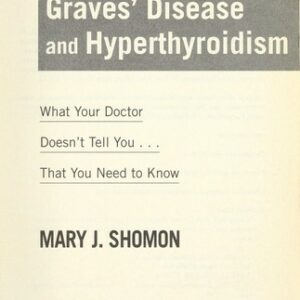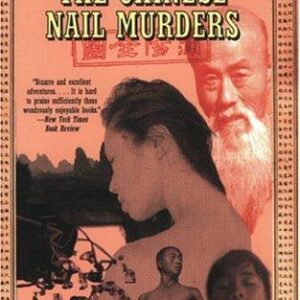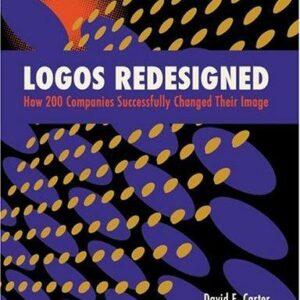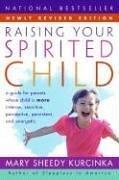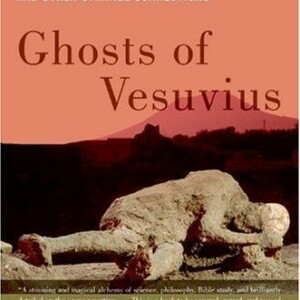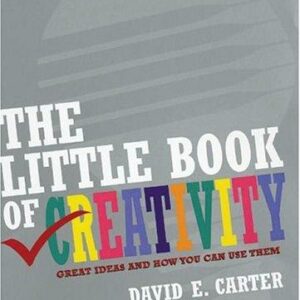Mexico in Mind
$23.00
| Title | Range | Discount |
|---|---|---|
| Trade Discount | 5 + | 25% |
- Description
- Additional information
Description
Two centuries of writers drawn to Mexico—from D. H. Lawrence, John Steinbeck, Jack Kerouac, and Tennessee Williams to Salman Rushdie, Anita Desai, and Sandra CisnerosThis scintillating literary travel guide gathers the work of great writers celebrating Mexico in poetry, fiction, and nonfiction. Ranging from 1843 to the present, Mexico in Mind offers a remarkably varied sampling of English-speaking writers’ impressions of the land south of the border. John Reed rides with Pancho Villa in 1914; Graham Greene defends Mexico’s priests; Langston Hughes describes a bullfight; Jack Kerouac and William Burroughs find Mexico intoxicating; Alice Adams visits Frida Kahlo’s house; Ann Louise Bardach meets the mysterious Subcommandante Marcos face to face. Fictional accounts are equally vivid, including poems by Muriel Rukeyser, Archibald Macleish, and Sandra Cisneros, short stories by Katherine Anne Porter and Ray Bradbury, and excerpts from John Steinbeck’s The Pearl, Tennessee Williams’ Night of the Iguana, and Salman Rushdie’s The Ground Beneath Her Feet. From the bustle of Mexico City to coffee planations in remote Chiapas, from Mayan ruins to the markets at Oaxaca, the scenes evoked in this anthology reflect the rich variety of the place and its history, sure to enchant vacationers, expatriates, and armchair travelers everywhere.Alice Adams • Ann Louise Bardach • Ray Bradbury • William S. Burroughs • Frances Calderón de la Barca • Ana Castillo • Sandra Cisneros • Anita Desai • Erna Fergusson • Charles Macomb Flandrau • Donna Gershten • Graham Greene • Langston Hughes • Fanny Inglehart • Gary Jennings • Diana Kennedy • Jack Kerouac • D. H. Lawrence • Malcolm Lowry • Archibald Macleish • Rubén Martínez • Tom Miller • Katherine Anne Porter • John Reed • Luis Rodriguez • Richard Rodriguez • Muriel Rukeyser • Salman Rushdie • John Steinbeck • Edward Weston • Tennessee WilliamsIntroduction
LOVE IN MEXICO
Bésame Mucho
Alice Adams
from Mexico: Some Travels and Some Travelers There (1991)
Edward Weston
from The Daybooks of Edward Weston (1923)
Katherine Anne Porter
“The Martyr” (1923)
Muriel Rukeyser
“Evening Plaza, San Miguel” (1944)
Ray Bradbury
“Calling Mexico” (1950)
John Steinbeck
from The Pearl (1945)
Luis Rodriguez
“The Old Woman of Mérida” (2005)
SIGHTS, SOUNDS, AND TASTES
Fiesta del Pueblo
Frances Calderón de la Barca
from Life in Mexico (1843)
Fanny Chambers Gooch Inglehart
from Face to Face with the Mexicans (1887)
Charles Macomb Flandrau
from Viva Mexico! (1908)
D. H. Lawrence
from Mornings in Mexico (1927)
Diana Kennedy
from My Mexico (1998)
Tom Miller
from “Searching for the Heart of La Bamba,” in Jack Ruby’s Kitchen Sink (2000)
REVOLUTIONARY ENCOUNTERS
¡Que Viva Mexico!
Archibald MacLeish
from Conquistador (1932)
John Reed
from Insurgent Mexico (1914)
Anita Desai
from The Zigzag Way (2004)
Graham Greene
from Another Mexico (1939)
Ann Louise Bardach
from “Mexico’s Poet Rebel” (1994)
DOWN AND OUT IN MEXICO
Desperados
Tennessee Williams
from Night of the Iguana (1961)
Malcolm Lowry
from Under the Volcano (1947)
Jack Kerouac
from “Mexico Fellaheen” (1960)
William S. Burroughs
from Junky (1953)
Donna M. Gershten
from Kissing the Virgin’s Mouth (2000)
ICONS AND IDENTITY
Patria and Pilgrims
Richard Rodriguez
from Days of Obligation (1992)
Ana Castillo
“My Mother’s México” (1994)
Rubén Martínez
from Crossing Over (2001)
Sandra Cisneros
“You Bring Out the Mexican in Me” (1994)
RITUAL AND MYTH
Día de los Muertos and Beyond
Erna Fergusson
from Fiesta in Mexico (1934)
Langston Hughes
from The Big Sea (1940)
Gary Jennings
from Aztec (1980)
Salman Rushdie
from The Ground Beneath Her Feet (1999)Maria Finn is the editor of the anthology Cuba in Mind (Vintage, 2004) and author of a memoir about falling in love and marrying her cab driver in Havana, Cuba. She has written for Audubon, Saveur, Metropolis, The New York Times, and the Los Angeles Times, among many other publications. She has an MFA in Creative Writing from Sarah Lawrence College and has published literary work in magazines such as Gastronomica, The Chicago Review, New Letters, and Exquisite Corpse. She has lived and worked in Alaska, Guatemala, and Spain, and traveled extensively in Latin America.Alice Adams (1926-99) Alice Adams is the author of ten novels and five collections of short stories, including Careless Love (1966), Superior Women (1984), Caroline’s Daughters (1991), Almost Perfect (1993), A Southern Exposure (1995), and its sequel, the posthumously published After the War (2000). She’s known for looking at the lives of contemporary women, exploring the nuances of both their professional and personal worlds and the intersection of the two. Adams traveled annually to Mexico for approximately thirty years. In this excerpt from Mexico: Some Travels and Some Travelers There (1991), she is inspired by an exhibit of Frida Kahlo’s art in San Francisco to visit the artist’s home, now a museum. Kahlo’s art reflects both her love for Mexico and her often painful love for fellow artist Diego Rivera. She has become an icon for the suffering artist. According to Adams, "Two words often used in connection with Kahlo are narcissism (‘All those self-portraits’) and masochism (‘All that blood’). Both seem to me quite wrongly applied. I rather believe Kahlo painted herself and her images of personal pain in an effort to stave off madness and death." When I thought of a return trip to Mexico City, with some friends who had never been there before, I remembered the Camino Real, which would be as far out of the fumes and the general turmoil as one could get, I thought-with advertisements featuring three swimming pools. And this trip’s true object, twenty years after my first contact with her, was Frida Kahlo: I wanted to make a pilgrimage to her house, and I had talked two friends into coming with me-Gloria, a writer, and Mary, an art critic. All of this more or less began in the spring of eighty-seven, when there was an extraordinary exhibit of Kahlo’s work at the Galería de la Raza, in San Francisco. So many painters’ work is weakened by its mass presentation in a show, but this was not so with Kahlo’s work: The overall effect was cumulative, brilliantly powerful, almost overwhelming. Her sheer painterly skill is often overlooked in violent reactions, one way or another, to her subject matter, but only consummate skill could have produced such meticulous images of pain, and love, and loneliness. I began to sense then, in San Francisco, a sort of ground swell of interest in both her work and in her life-and the two are inextricable. Kahlo painted what she felt as the central facts of her life: her badly maimed but still beautiful body, and her violent love for Diego. In fact, these days Frida has become a heroine of several groups; she is a heroine as an artist; as a Third World woman; and also as a handicapped woman. And then there is still another group popularly referred to as "women who love too much," the "too much" referring especially to men perceived as bad, as unfaithful and not loving enough in return. I began to read all I could about Frida Kahlo. The accident that maimed her occurred when she was eighteen: A streetcar rammed into the trolley in which she was riding, and her spine was broken in seventeen places-it is astonishing that she should have survived. Her pelvis was penetrated by a shaft of metal (a "rape" of which Frida made much), her reproductive organs were gravely injured. Considerable controversy continues over the precise facts about her injuries. Medical records are lost, or missing. It is now impossible to determine whether she actually did, as she claimed, have seventeen corrective operations; Frida did tend to exaggerate, to mythologize herself, but even a dozen such operations would be quite a lot. It is also uncertain whether she could or could not bear children, or whether she really wanted to. Certainly she was pregnant a number of times and suffered both therapeutic abortions and miscarriages. It would seem to me that she was extremely ambivalent, to say the least, about having children. She was not ambivalent about Diego; she adored him, she loved him too much. In the course, then, of reading about Frida, of looking at what paintings I could (even in reproduction they are, to me, both intensely beautiful and powerfully moving), and of talking to a few Kahlo scholars, one of the first things that I learned about her was that, in addition to her extraordinary and absolutely original talent, Frida had a capacity for inspiring feelings of an exceptional intensity in almost anyone who encountered her. And she would seem to continue to do so, even in death. (I should here admit my own enthrallment, with which I seem to have infected my friends, Gloria and Mary.) Thus, a trip to the Frida Kahlo Museum, which was formerly her home, the blue house out in Coyoacán, is apt to have the character of a pilgrimage to a shrine. We went there to pay homage as well as out of curiosity. And we had, I am sure, like all passionate pilgrims, a burden of expectations, or preconceptions, some quite possibly unconscious. In any case, the museum contained some vast surprises: considerable beauty, much sadness, and several disturbing questions. The first surprise for me was quite simply the intensity of the color of those high outer walls; to a Californian (I suppose I am one), the phrase "blue house" implies a pastel, surely not the violent, vibrant blue of Frida’s house, which is like certain Mexican skies. Its size, too, was unexpected: It covers a small town block. High walls, then, and a gate guarded by two papier-mâché judas figures-and by a small, somewhat shabby real guard, who assures visitors that their entrance is free and warns them that they may not take pictures. To the right, just as one passes between the judas giants, there is a small room with a glassed-in counter and some shelves, obviously designed as a bookstore-postcard display area-and now quite bare. Empty, that is, except for one rather gaudy pamphlet, entitled "Altar in the First Centenary of Diego Rivera," and in which there are many references to, and an introduction by, Dolores Olmeda, the "Life Director of the Diego Rivera and Frida Kahlo Museums." Frida is mentioned only once, as Diego’s third wife. No books on Frida, no posters or postcards. (Why?) The garden area that one next sees is rich and wonderful, however: a barely tamed green jungle, a perfect habitat for Frida’s pet monkeys, for birds. (Cats would love it there, I thought, not seeing any.) At the time of my visit a large bed of pink lilies blossomed, the kind called Naked Ladies. And great tall trees. And a tangled profusion of vines. On a wall near the entrance to Frida’s house an inscription informed us that Frida and Diego had lived in this house from 1929 to 1954-a touching announcement and quite untrue (and who put it there, I wonder?). For although Frida was born in that house, which was built by her father, Diego’s residences were both multiple and brief; he came and went very much as he chose, neither remaining at home nor staying away for long (one knows the type). The abode most lengthily shared by Frida and Diego is the two joined houses in San Angel, now the Diego Rivera Museum. The first room of the blue house is rather low and small, as are all the rooms in this semicolonial sprawl. One can imagine the house as warm and wonderful, hospitable first to the large Kahlo group (her father by two wives had six daughters), and then to Frida and Diego and their enormous circle of friends: Trotsky, Siqueiros, et cetera. But it takes considerable imagining, so little household furniture is left (and whatever happened to it? Where are all the ordinary tables and chairs that were used by Frida?). Frida’s paintings line this entrance room, and while interesting and highly original, as is all her work, they are simply not her best; in no sense is this a major Kahlo exhibition-a great pity, since her work is extremely hard to find. Most of her paintings are in private collections, including all the paintings that she willed to Rivera and that he in turn willed to a trust for the people of Mexico, along with her house. She is barely represented in museums in Mexico City. The most striking of that small collection is the bright still life of watermelons, Viva la Vida, thus titled and signed by Frida very shortly before her death. But this painting’s appeal seems emotional and historic, rather than intrinsic. The kitchen is cozily furnished indeed, with bright painted chairs, red and yellow, new-looking (too new to have been there when Frida was), the sort that one might find in any Mexican open market. And glazed plates and pottery, cooking implements. Tiny jars affixed to the back wall, high up, spell out Frida y Diego in large letters. This seemed an unlikely note of kitsch, and indeed I was later told that these names were a later addition, put up some years after the deaths of Diego and Frida. Other rooms house an extensive collection of pre-Columbian figures, and paintings, mostly by Rivera, some by friends, both Mexican and European. And there is Diego’s bedroom, with his surprisingly small bed for such a huge man, and his rough, enormous boots. Then, going upstairs, within the broad, dark stairwell is the vast collection of retablos, small Mexican votive paintings, said to have profoundly influenced the art of Frida. And then one comes to Frida’s tiny, narrow, poignant bedroom, the room in which, at forty-seven, she died and was laid out. And photographed, lying there. Since she was so very, very often photographed in life (more often than Marilyn Monroe, it has been said)-the daughter of a photographer, she must have been early habituated to what seems to many people an intrusion-it is not surprising that she was also photographed in death, on this same narrow white bed, with its florally embroidered sheets. One of the terrible plaster casts that she finally had to wear (and that she decorated with painted flowers) lies on the coverlet. Still, this sense of her death makes visiting this area both macabre and embarrassing: I felt that I should not have been there. It seems more permissible to enter the studio, built for her by Diego, in 1946, and wonderfully open to views of her wild green garden. It is a cheering, open room, and one can forgive Diego a great deal for having built this space for Frida’s work. Which leads us to a question that often seems to trouble Frida’s partisans: Why did Frida remain in such a state of adoration for a man who was continuously, compulsively unfaithful to her, and who was for long periods of time conspicuously off and away with other, often famous, women? It seems to me that there are two explanations, insofar as one can "explain" a major passion-one rational, one not. The rational explanation would be that Diego entirely supported Frida’s work; he often spoke of her as one of the greatest living painters, he cited the intensely female, anguished complexity of her work. He even compared his own painting unfavorably to hers (quite correctly, in my own view). And, more darkly, irrationally, Frida was absolutely addicted to Diego; she could be said to have been impaled on her mania for Diego, as she had been literally impaled in the horrifying streetcar accident that, when she was eighteen, so painfully, horribly transformed her life. She herself referred to the "two accidents" in her life, the streetcar crash and Diego. Edward Weston (1886-1958) Born in Highland Park, Illinois, Edward Weston first started taking photographs in 1902. He moved to California, where he married and fathered four sons. Weston met Tina Modotti in California about 1919 when he became her mentor and then, two years later, her lover. She modeled for him and helped set up photography connections for him in Mexico City. In 1923, they traveled to Mexico with his eldest son, Chandler; there they became part of what is now known as the Mexican Renaissance, which included artists such as Diego Rivera and José Clemente Orozco. Mexico was just coming out of the revolution, started years earlier by Villa and Zapata, and the atmosphere was politically charged. Modotti became politically involved, and many of her later photographs depict Mexican workers and revolutionary icons. In Mexico, Weston developed a modernist aesthetic and created sharp, clear photographs, frequently sensual depictions of flora and of nudes. Through their work during this time, Weston and Modotti influenced photographers in both Mexico and the United States; they became internationally known for influencing modernist photography as well as for their stormy romance. The Daybooks are journals kept by Weston, beginning with entries from 1923. They chronicle the three years he spent in Mexico, including observations about places and people, doubts and eagerness about his own work, his financial concerns, and his friendship with Diego Rivera and Lupe Marin, Rivera’s beautiful, spirited wife at the time. The journals are an intimate account of his thoughts on Mexico, art, love affairs, and his development as a photographer. "Romantic Mexico" August 2, 1923. Tina, Chandler and Edward on board the S. S. Colima, four days out from Los Angeles. At last we are Mexico bound, after months of preparation, after such endless delays that the proposed adventure seemed but a conceit of the imagination never actually to materialize. Each postponement became a joke to our friends and a source of mortification to us. But money had to be raised, and with rumors of my departure many last moment sittings came in, each one helping to secure our future. Nor was it easy to uproot oneself and part with friends and family-there were farewells which hurt like knife thrusts. But I adapt myself to change-already Los Angeles seems part of a distant past. The uneventful days-the balmy air has relaxed me-my overstrained nerves are eased. I begin to feel the actuality of this voyage. The Colima flies a Mexican flag, she is small, not too clean and slow-yet I would not change to a more pretentious ship, noisy with passengers from whom there might be no escape. The crew, all Mexican, is colorful and inefficient according to our standards-but it is a relief to escape from that efficiency which makes for mechanized movements, unrelieved drabness. On board is an Australian sea-captain, a coarse, loud fellow, who continually bellyaches over the dirt, food, service-he goes purple when a waiter’s coat is unbuttoned, discounts the whole crew as ignorant, beneath contempt-yet he is the one who suffers by comparison. The Mexicans, at least, have an innate fineness, and they are good to look upon. Yesterday the sea was rough, the Colima pitched and rolled-Tina sick, pobrecita! In contrast, the night before, our ship cut through silent, glassy waters domed by stars-toward what unknown horizons? A night of suspended action-of delayed but imminent climaxes-anything might happen-nothing did. August 4. A half-moon half hidden by heavy clouds-sculptured rocks, black, rising from silvered waters-shriek of whistle and rasp of chain; 1:00 a.m. and we anchored in the harbor of Mazatlán, my first foreign port. Morning-and we excitedly prepared for shore. Thanks to Tina-her beauty-though I might have wished it otherwise!-el Capitán has favored us in many ways: the use of his deck, refreshing drinks in his cabin, his launch to carry us ashore.US
Additional information
| Weight | 7.0096 oz |
|---|---|
| Dimensions | 0.6000 × 5.2000 × 8.0000 in |
| Series | |
| Imprint | |
| Format | |
| ISBN-13 | |
| ISBN-10 | |
| Author | |
| Audience | |
| BISAC | |
| Subjects | traveling books, travel gift, history gifts, travel memoir, travel diary, gifts for history buffs, historical books, history buff gifts, history lovers gifts, road trip essentials, history teacher gifts, travelogue, travel memoirs, travelogues, travelogue books, history of Mexico, mexico history, mother in law christmas gifts, biographies, travel, road trip, mexico, history books, world history, bucket list, travel writing, national parks, history, Travel books, travel book, essays, HIS025000, national park, travel gifts, TRV014000, travels |


